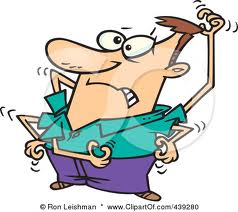Posted on 08/09/2012 by Emma Hitt, PhD Medscape 2012
Clinical Context
Symptoms characteristic of many skin diseases include itch and pain. Some experts have suggested that negative emotions may be involved in the perception of itch and pain. However, previous experimental studies of the role of emotions on sensory perception have only investigated the effects on pain and not on itch.
The goal of this study by van Laarhoven and colleagues was to assess the effects of negative and positive emotions on sensitivity to itch as well as to pain. The hypothesis tested by this study was that the levels of itch and pain evoked by somatosensory stimuli and the perceived unpleasantness would be higher in association with negative emotions vs positive emotions.
Study Synopsis and Perspective
Feelings associated with itch and pain become more intense in women induced to feel negative rather than positive emotions, according to a new study.
Antoinette I. M. van Laarhoven, MD, with the Radboud University, Nijmegen Medical Centre, the Netherlands, and colleagues published their findings in the July issue of the British Journal of Dermatology.
“Although it seems likely that emotions play a role in the perception of itch, experimental studies investigating the role of negative and positive emotions in itch are lacking,” Dr. van Laarhoven and colleagues noted.
According to the researchers, the aim of the current study was to investigate for the first time whether negative and positive emotions influence both itch and pain sensations.
A total of 77 healthy female participants watched film clips to induce a negative or positive emotional state. Two clips from the movie Happy Feet were used for the positive emotion condition, and 2 clips from the movie Irreversible was used for the negative emotion condition. Electrical stimulation, histamine iontophoresis, and the cold pressor test were used to induce itch and pain.
The scores for itch and pain evoked by histamine and the cold pressor test, respectively, were significantly higher in the negative vs the positive emotion condition. In the negative emotion condition, a higher unpleasantness rating of the film fragments correlated with lower electrical (P = .05) and cold pressor (P < .05) tolerance thresholds, and higher scores on the visual analog scale for unpleasantness during electrical stimulation (P = .05) and for pain during the cold pressor test (P = .06).
The authors note that individual psychological characteristics were not related to the self-reported negative and positive emotions or the outcome measures of the sensory stimuli and may only minimally contribute to the effects of emotions on sensitivity to itch and pain.
“This study showed for the first time that people experience higher levels of itch elicited by histamine when they are in a negative, rather than a positive, emotional state, and replicated previous findings that pain levels elicited by the cold pressor test are increased when a person is in a negative, rather than a positive, emotional state,” Dr. van Laarhoven and colleagues conclude.
Potential mechanisms that may underlie the effect of emotions on itch and pain sensations may involve deactivation or activation of various brain regions that occur during the experiencing of emotions. These areas may include the anterior cingulate cortex, posterior cingulate cortex, prefrontal cortex, and insula. These areas are also activated during the anticipation of pain and itch sensations.
“That these brain areas are common to both emotions and to pain and itch could support there being a close link between affective states and these somatosensory sensations,” Dr. van Laarhoven and colleagues write.
They also suggest that emotional stimuli could either lead to analgesia or to hyperalgesia and that “the effects of expectations on pain in placebo analgesia are also influenced by the affective quality of the pain sensation and by the internal affective state of the individual during the pain.”
According to the researchers, future studies should focus on disentangling the processes by which affective and cognitive factors interactively and differentially affect the modulatory processing and perception of itch and pain.
They also suggest that treatments could be increasingly aimed at disrupting this “cycle of itch and pain amplification by negative emotions, and especially in patients with high levels of psychological distress (e.g. depressive symptoms or anxiety).”
The study authors have disclosed no relevant financial relationships.
Br J Dermatol. 2012;167:262-269.
